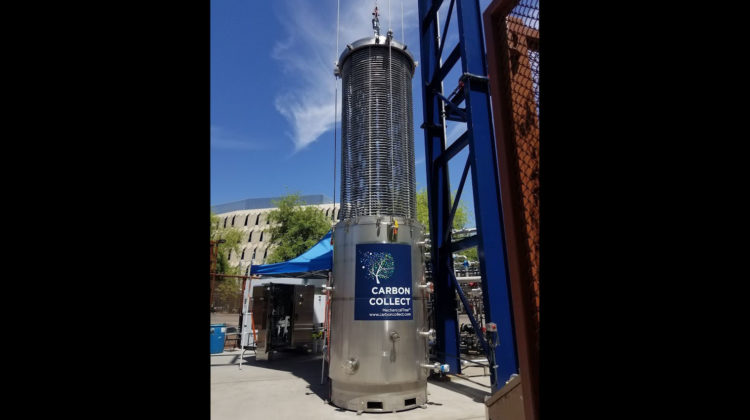
Dublin-based company Carbon Collect has unveiled its first commercial-scale device for capturing carbon dioxide from the atmosphere.
Dubbed MechanicalTree, the device is based on proprietary technology developed at Arizona State University (ASU) by Professor Klaus Lackner, director of ASU’s Center for Negative Carbon Emissions (CNCE)and Carbon Collect’s chief scientific adviser. According to the company, the MechanicalTree acts like a tree that is thousands of times more efficient at removing CO2 from the air. The device allows the captured gas to be sequestered or sold for re-use in a variety of applications, such as synthetic fuels, enhanced oil recovery or in the food, beverage and agricultural industries.
Unlike other existing carbon-capture technologies, the MechanicalTree can remove CO2 from the atmosphere without needing to draw air through the system mechanically using energy-intensive devices. Instead, the technology is passive, using the wind to blow air through the system, making it a passive, scalable, low-cost (less than US$100 per tonne at scale – the lowest in the industry) solution. Carbon Collect said that if deployed at scale, the technology could significantly reduce atmospheric CO2 levels, helping to combat global warming.
‘The situation has got to the point where we need to stop talking about [global warming] and start doing something about it,’ said Lackner. ‘Carbon dioxide is a waste product we produce every time we drive our cars or turn on the lights in our homes. Our device can recycle it, bringing it out of the atmosphere.’
Each MechanicalTree contains a stack of sorbent-filled discs. When the tree-like column is fully extended, the discs spread apart. Air flowing through the devices comes into contact with the discs’ surfaces, where CO2 gets bound up with the sorbent. During regeneration, the discs are lowered and the CO2 is released from the sorbent, collected, purified and processed. The discs are then redeployed to capture more CO2.
Carbon Collect plans to deploy clusters of the devices, comprised of 12 columns, which will be capable of removing a tonne of CO2 from the air per day. It hopes to eventually scale up to CO2 farms in multiple locations, each capable of removing up to 3.8 million tonnes of CO2 annually.
‘Our goal is to accelerate the global climate effort set out in the Paris Agreement to contribute to reversing global carbon emissions in the next 10–15 years,’ said Pól Ó Móráin, CEO of Carbon Collect. ‘Our passive process is the evolution of carbon-capture technology which has the ability to be both economically and technologically viable at scale in a reasonably short time frame.’


